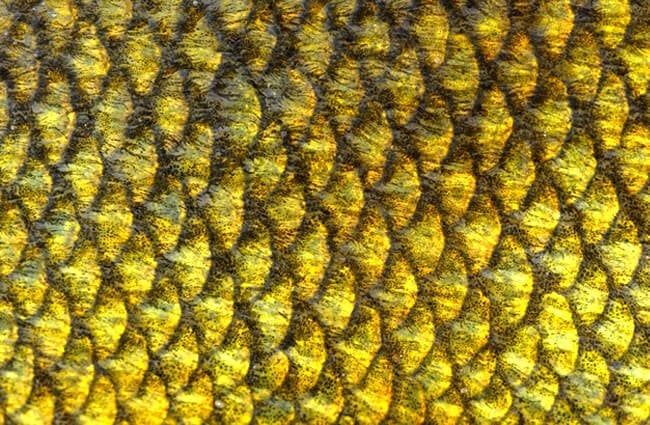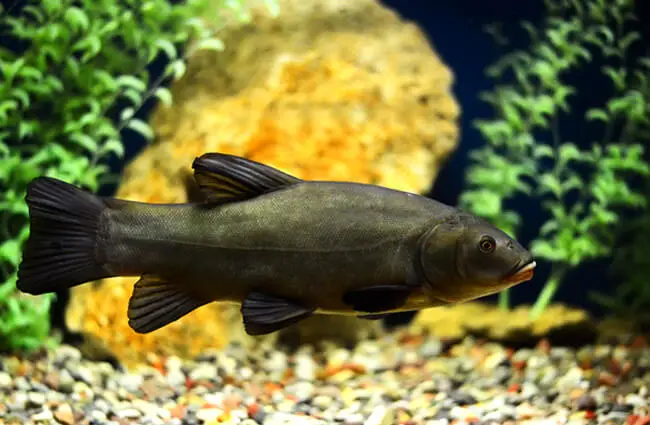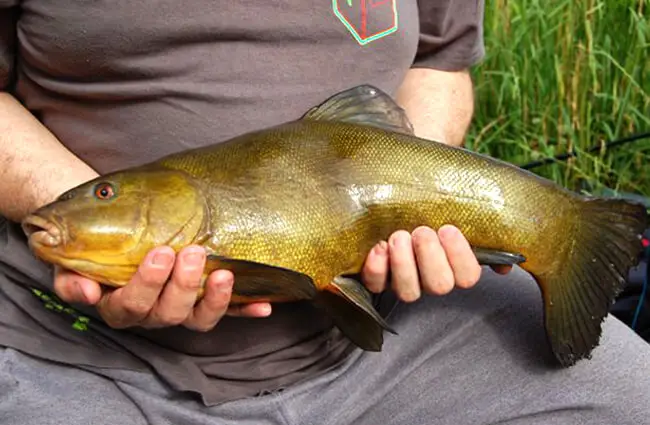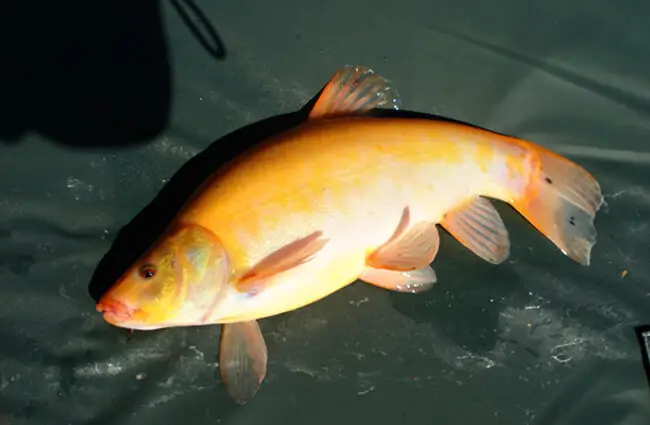Deep within the murky, tranquil waters of lakes and slow-moving rivers, a creature of subtle beauty and intriguing habits often goes unnoticed. This is the Tench, Tinca tinca, a freshwater fish with a reputation as mysterious as its preferred habitat. Often dubbed the “Doctor Fish” for reasons we will explore, the Tench is far more than just another inhabitant of the aquatic world; it is a resilient survivor, an ecological contributor, and a fascinating subject for anyone with a keen interest in nature.
This comprehensive guide delves into the world of the Tench, from its ancient origins to its interactions with humans, providing insights valuable for students, animal enthusiasts, aspiring zoologists, and even those who might simply encounter one in the wild.

Unveiling the Tench: Basic Biology and Appearance
The Tench is a member of the carp family, Cyprinidae, though it possesses distinct characteristics that set it apart. Its scientific name, Tinca tinca, reflects its unique identity. This fish typically exhibits a robust, somewhat compressed body, covered in very small, deeply embedded scales that give it a smooth, almost leathery appearance. The skin is often coated in a thick layer of protective slime, contributing to its “Doctor Fish” moniker.
Adult Tench usually reach lengths of 20 to 40 centimeters, though larger specimens exceeding 60 centimeters and weighing over 7 kilograms have been recorded. Their coloration is typically a dark olive green to golden brown on the back, fading to a lighter, yellowish-green on the flanks and a creamy white on the belly. A distinguishing feature is the presence of small, red eyes and a single pair of tiny barbels at the corners of its mouth, which are crucial sensory organs for foraging in low light conditions.
Where Tench Call Home: Habitat and Distribution
Tench are native to a vast area spanning Europe and parts of Asia, from Western Europe across Russia to Siberia and even into parts of China. They have also been introduced to other regions, including North America, where they have established populations in some areas.
These fish are quintessential inhabitants of still or slow-moving freshwater environments. Their preferred habitats include:
- Lakes
- Ponds
- Canals
- Backwaters of rivers
- Oxbow lakes
They thrive in waters with abundant aquatic vegetation, such as reeds, water lilies, and submerged plants, which provide both cover from predators and a rich feeding ground. Tench are particularly tolerant of low oxygen levels and can survive in conditions that would be fatal to many other fish species, a testament to their hardiness. They prefer soft, muddy or silty bottoms, where they can root around for food and hide.
What’s on the Menu: Tench Diet and Feeding Habits
The Tench is primarily a bottom feeder, employing its sensitive barbels to detect food items buried in the substrate. Its diet is omnivorous and highly varied, adapting to whatever is available in its environment. Common food sources include:
- Invertebrates: Insect larvae (chironomids, caddisflies), worms, small crustaceans, mollusks.
- Plant Matter: Algae, detritus, fragments of aquatic plants.
- Small Fish: Occasionally, very small fish or fish eggs may be consumed.
Tench are largely nocturnal feeders, becoming more active during dusk and dawn. They use their protrusible mouths to suck up mud and debris, filtering out edible particles. This feeding behavior plays a significant role in nutrient cycling within their ecosystems.

A Deeper Dive: Evolution, Reproduction, and Ecological Role
An Ancient Lineage: Tench’s Evolutionary History
The Tench represents an ancient lineage within the carp family, having evolved to specialize in the often challenging conditions of still, vegetated waters. Its robust body, small scales, and thick mucus layer are all adaptations that have contributed to its survival over millennia. The ability to tolerate low oxygen levels, for instance, is a crucial adaptation for life in stagnant ponds that can become deoxygenated during hot summers or under ice in winter. Its bottom-feeding habits and omnivorous diet also showcase its adaptability, allowing it to exploit a wide range of food resources.
The Cycle of Life: Mating and Reproduction
Tench typically reach sexual maturity between two and four years of age. Spawning usually occurs in late spring or early summer, when water temperatures consistently reach around 18 to 22 degrees Celsius. The process is quite distinct:
- Courtship: Males become more active, often chasing females through dense vegetation.
- Egg Laying: Females lay a large number of small, adhesive eggs, typically between 200,000 and 600,000, attaching them to aquatic plants, particularly submerged weeds and roots.
- Fertilization: Males then fertilize the eggs externally.
- Incubation: The eggs hatch relatively quickly, usually within three to six days, depending on water temperature.
- Fry Development: The newly hatched fry are tiny and initially feed on their yolk sacs before transitioning to microscopic plankton. They seek refuge in dense vegetation, which offers protection from predators.
Successful reproduction is highly dependent on warm water temperatures and the presence of suitable spawning grounds with ample vegetation.
The “Doctor Fish” and Ecosystem Contributions
The Tench’s nickname, “Doctor Fish,” is steeped in folklore and observation. It was once believed that other fish would rub against the Tench’s slimy body to heal their wounds or ailments. While this direct healing effect is not scientifically proven, the Tench’s thick, protective mucus does contain antibacterial properties, which might have contributed to the legend.
Beyond folklore, the Tench plays several important roles in its ecosystem:
- Bottom Sediment Management: As a bottom feeder, Tench help to aerate and disturb the sediment, releasing nutrients back into the water column, which can benefit plant growth.
- Food Source: Juvenile and adult Tench serve as a food source for larger predatory fish, birds, and mammals, contributing to the aquatic food web.
- Algae Control: By consuming algae and detritus, they can help regulate water quality, especially in heavily vegetated areas.

Tench and Humanity: Culture, Interaction, and Conservation
A Place in Human Culture
The Tench has a long history of interaction with human culture, particularly in Europe:
- Angling: It is a popular sport fish, prized for its fighting spirit and elusive nature. Anglers often target Tench in still waters, particularly during warmer months.
- Aquaculture: Due to its hardiness and growth rate, Tench has been farmed for food in Europe for centuries, particularly in pond systems.
- Culinary Delicacy: In many European countries, Tench is considered a fine table fish, often prepared in traditional dishes.
- Ornamental Fish: The “Golden Tench,” a selectively bred variety with a striking orange or golden coloration, is a popular ornamental fish for garden ponds.
Interaction with Humans: Angling, Aquaculture, and Conservation
Human interaction with Tench is multifaceted. Anglers often practice catch and release to preserve populations, while commercial aquaculture operations contribute to food security. However, like many freshwater species, Tench populations can be affected by habitat degradation, pollution, and the introduction of invasive species. Conservation efforts often focus on protecting and restoring their preferred habitats, ensuring clean water, and managing fishing pressures sustainably.

Practical Insights for Enthusiasts and Professionals
Finding Tench in the Wild: A Guide for Animal Lovers
For those hoping to observe Tench in their natural habitat, patience and a keen eye are essential. Remember, they are shy and often nocturnal. Here’s how to increase your chances:
- Location: Focus on still or slow-moving waters with abundant aquatic vegetation and muddy or silty bottoms. Look for areas with reeds, lily pads, and submerged plants.
- Timing: Dusk and dawn are the best times for observation, as Tench are more active then.
- Observation: Sit quietly by the water’s edge. Look for subtle movements in the vegetation, small bubbles rising from the bottom (indicating feeding activity), or the occasional flash of a fish’s flank. Polarized sunglasses can help reduce glare and improve visibility into the water.
- Equipment: Binoculars can be useful for observing from a distance without disturbing the fish.
Always observe from a respectful distance, minimizing disturbance to the environment and its inhabitants.
Encountering Tench: What to Do for Hikers
If you are a hiker or casual visitor to a freshwater body and happen to spot a Tench, the best course of action is simple: observe and appreciate. Do not attempt to touch, catch, or disturb the fish. Enjoy the rare glimpse into the aquatic world and continue on your way, leaving the environment as undisturbed as you found it. Remember that all wildlife deserves respect and space.
Caring for Tench in Captivity: A Zookeeper’s Guide
Keeping Tench in a captive environment, such as a large aquarium or pond, requires specific considerations to ensure their well-being. Zookeepers or dedicated aquarists should focus on replicating their natural habitat as closely as possible.
- Enclosure Size: Tench grow to a considerable size, so a large tank (at least 500 liters for a single adult, much larger for multiple individuals or a pond) is crucial. Provide ample swimming space.
- Water Parameters:
- Temperature: 10-22°C (50-72°F). They are tolerant of a range but prefer cooler, stable conditions.
- pH: 7.0-8.0.
- Hardness: Moderate to hard water.
- Oxygenation: While tolerant of low oxygen, good aeration is always beneficial for overall health.
- Filtration: Robust filtration is necessary to maintain water quality, especially given their bottom-feeding habits which can stir up sediment.
- Substrate: A soft, sandy or silty substrate is ideal, allowing them to exhibit natural foraging behaviors. Avoid sharp gravel.
- Aquatic Vegetation: Dense planting with a variety of submerged and floating plants is essential for cover, security, and potential spawning sites.
- Diet: Offer a varied diet mimicking their natural intake. This can include high-quality sinking pellets, bloodworms, earthworms, brine shrimp, and vegetable matter. Feed once or twice daily, ensuring all food is consumed to prevent water pollution.
- Enrichment: Providing hiding spots (driftwood, rocks, dense plant cover) and a soft substrate for digging are key forms of enrichment.
- Social Behavior: Tench can be kept singly or in small groups. They are generally peaceful but can be shy.
- Common Issues to Avoid:
- Overcrowding: Leads to stress, poor growth, and disease.
- Poor Water Quality: The most common cause of illness. Regular water changes and monitoring are vital.
- Inadequate Diet: Can lead to nutritional deficiencies.
- Lack of Hiding Places: Increases stress and makes the fish feel vulnerable.

Fascinating Facts About Tench
- The Tench’s scientific name, Tinca tinca, is a tautonym, meaning the genus and species names are the same.
- They are incredibly hardy fish, capable of surviving out of water for short periods if kept moist, thanks to their thick slime coat.
- The Golden Tench is not a separate species but a color morph, selectively bred for its striking appearance.
- Tench can live for up to 20 years in ideal conditions.
- Their small, red eyes are adapted for low-light conditions, reflecting their crepuscular and nocturnal habits.
- The thick mucus layer on their skin is thought to help protect them from parasites and bacterial infections.
- During winter, Tench enter a state of torpor, burying themselves in the mud at the bottom of their habitat and significantly reducing their metabolic rate.
Conclusion: The Enduring Appeal of the Tench
From its humble beginnings in ancient freshwater systems to its modern-day role in ecosystems and human culture, the Tench remains a truly remarkable fish. Its resilience, adaptability, and subtle beauty make it a creature worthy of our attention and protection. Whether observed in the wild, studied in an academic setting, or cared for in a controlled environment, the Tench offers a wealth of knowledge and a testament to the intricate wonders of the natural world. Understanding and appreciating species like the Tench is a vital step in fostering a deeper connection with our planet’s incredible biodiversity.

![Red Angus Closeup of a beautiful Red Angus cowPhoto by: U.S. Department of Agriculture [pubic domain]https://creativecommons.org/licenses/by/2.0/](https://animals.net/wp-content/uploads/2020/03/Red-Angus-4-238x178.jpg)




![Red Angus Closeup of a beautiful Red Angus cowPhoto by: U.S. Department of Agriculture [pubic domain]https://creativecommons.org/licenses/by/2.0/](https://animals.net/wp-content/uploads/2020/03/Red-Angus-4-100x75.jpg)

